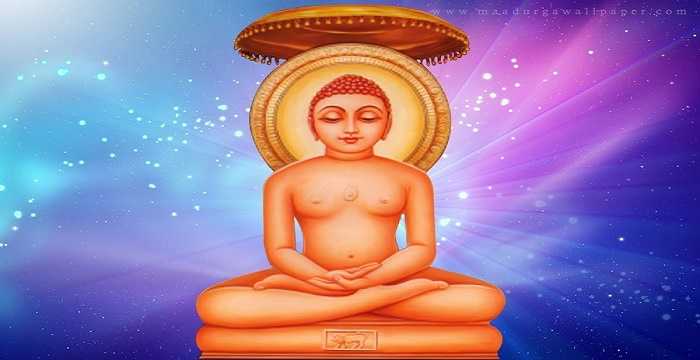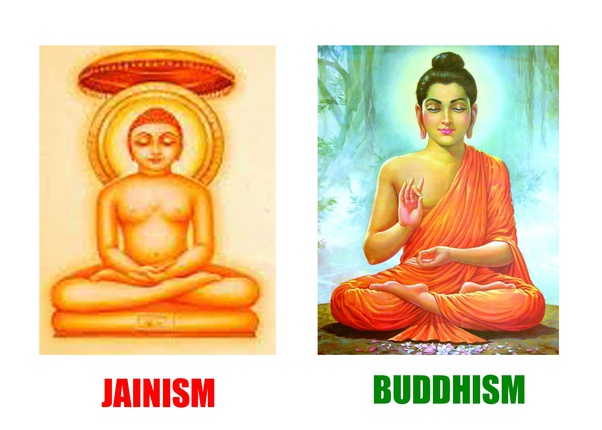Several Saramana movements of Buddhism and Jainism are known to have existed in India before the 6th century BCE (pre-Buddha, pre-Mahavira), and these influenced both the astika and nastika traditions of Indian philosophy. Martin Wiltshire states that the Sramana tradition evolved in India over two phases, namely Paccekabuddha (pratyekabuddha) and Savaka phases, the former being the tradition of an individual ascetic and the latter of disciples, and that Buddhism and Jainism ultimately emerged from these as sectarian manifestations.
These traditions drew upon already established Brahmanical concepts, states Wiltshire, to formulate their own doctrines. Reginald Ray concurs that Sramana movements already existed and were established traditions in pre-6th century BCE India, but disagrees with Wiltshire that they were non-sectarian before the arrival of Buddha
Rise of Heterodox Sects: Buddhism and Jainism
600 BC was the age of an intellectual revolution in India. Several new ideas & values, beliefs emerged during this age. The heterodox sects like Buddhism and Jainism were response & reaction to the evils of Brahmnical order and changing realities. The prevailing socio-religious-economy life was responsible for the emergence of these sects.
The heterodox sects of 600 BC put forward a new vision of life which was in tune with the needs & aspirations of the masses. It was because of this synergy between ideas of heterodox sects like Buddhism & Jainism & the aspiration of people that transformed these sects into the religion of the masses.
Factors responsible for the emergence of heterodox sects
600 BC was the age of remarkable progress in agriculture. Agricultural expansion took place as a result of which the peasants wanted to use their bulls & calves in agriculture activities such as pulling the plow & carts. The Brahmanical religion of 600 BC emphasized the killing of Bulls & cows in religious sacrifices. The violent sacrifices of Brahmanical religion obstructing the program of people because of this peasant had started for looking new religion I which violent ritual/ceremony.
It was the first need for non-violent religion free from rituals & ceremonies that triggered the rise of heterodox sects like Buddhism & Jainism that emphasize non-violence. Trade & Commerce and Arts & Crafts witnessed rapid progress during 600 BC the groups involved in these acts wanted to invest their resource in their business to ensure rapid progress but the existing Buddhism religion was demanding the waste of full expenditure resources in rituals & ceremonies.

This incongruity between the needs of the economy & ideas of the Brahmanical order forced people to look for new religions free from costly rituals & ceremonies. This urge for change was responsible for the emergence of heterodox sects like Buddhism & Jainism which opposed Ritual & Ceremonies.
Brahmanical religion of 600 BC was not in tune with the merging urban life because Brahma opposed the practice of money landing & public eating houses. Both of these were fundamental necessities of the new urban economy. This dichotomy between the needs of the rapidly emerging urban economy & the Buddhism idea forced people to look for a new religion that would appreciate changing realities. Heterodox sects like Buddhism & Jainism were products of these necessities. That’s why Buddha & Mahavira not only approved the public eating houses but at the same, they supported the practice of money landing.
Role of Economy progress
Rapid economic progress witnessed 600 BC had witnessed the emergence of a rich class of artisans & craftsmen & merchants & traders. These groups were aspiring for higher social status in consonance with their economic strength but existing Brahmanical order. Provided no scope for upward social mobility. The social status of a person was based on birth & profession.
Dissatisfied with the rigidity of the Brahmanical order this rich class of merchants, traders’ artisan, and craftsman were looking for a new socio-religious system in which they could enjoy a higher status. This urge played important role in the emergence of Buddhism & Jainism which accord higher status to groups involved in see & tertiary activities.

The Brahmanical religion of 600 BC was characterized by complex and costly rituals. Magical power was attached to hymns. It was demanded that hymns must be chanted in a particular manner to get the desired resulted in improper chanting could be destructive.
The costly character of rituals & ceremonies had carried Brahmnical religion away from the reach of common masses. The people were looking for a new religion free from costly rituals & ceremonies. This urge was responsible for the emergence of heterodox sects like Buddhism & Jainism that emphasized simplicity. The complex rituals & ceremonies of Brahmanical religion were beyond the comprehension of the common masses. The people were looking for a new religion free from complexities. The simple & liberal heterodox sects like Buddhism & Jainism were the product of these needs. Leaders like Buddha & Mahavira put forward simple philosophy like 4 noble truths, 6 fold path, 10 teaching & 5 vows that could be understood by anybody.
The complex ritual of Brahmanical religion could not perform without the support of priests. The role of the priest was indispensable in Brahmanical religion because of this the people had started looking for new religion free from priestly mediation in heterodox sects like Buddhism & Jainism priestly class was completely absent.

